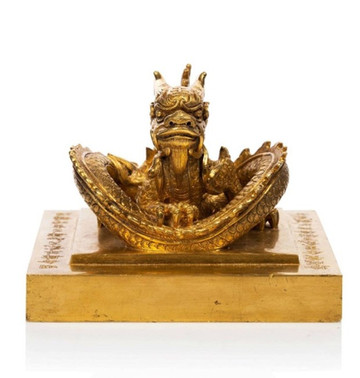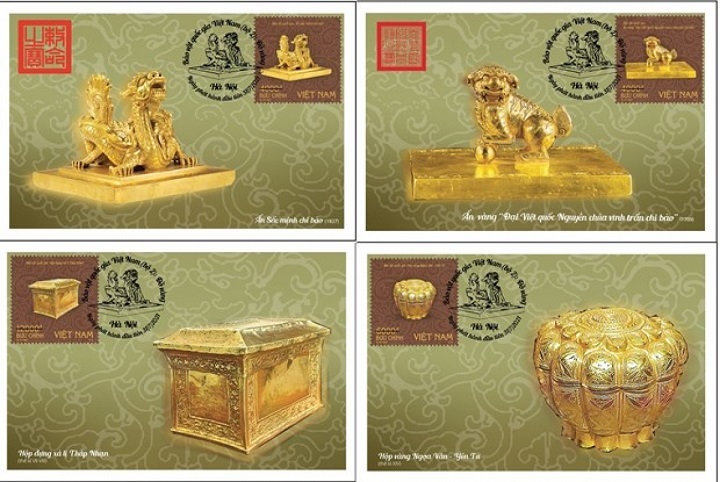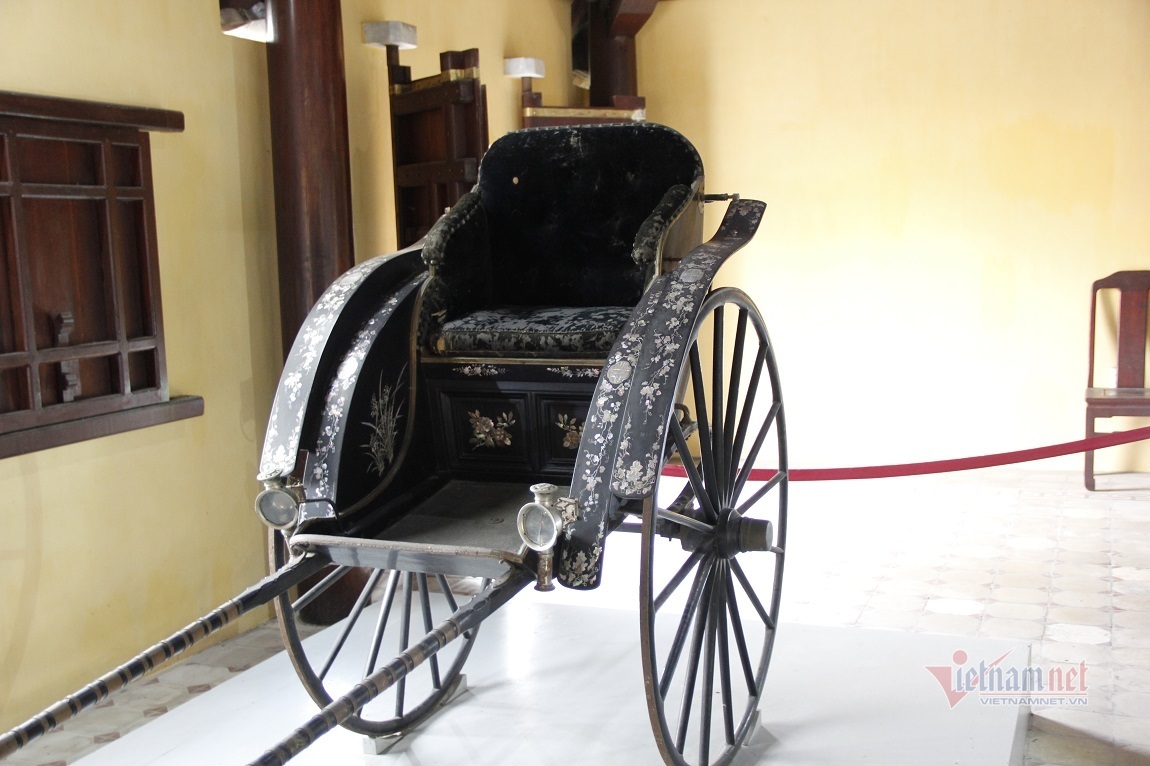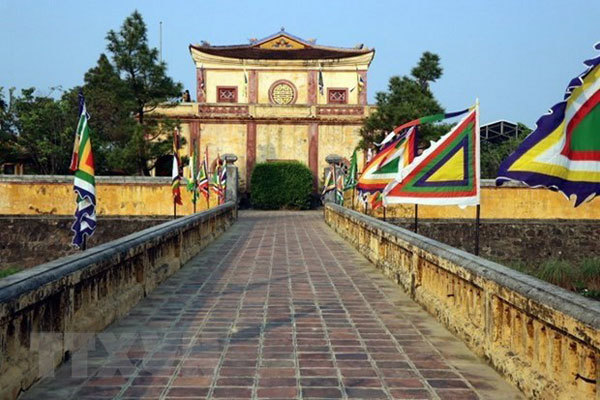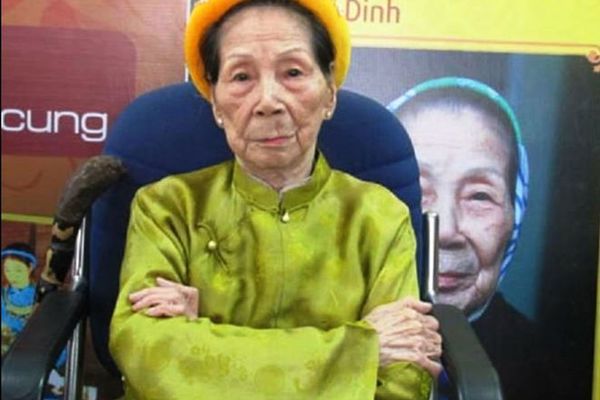- © Copyright of Vietnamnet Global.
- Tel: 024 3772 7988 Fax: (024) 37722734
- Email: [email protected]
nguyen dynasty
Update news nguyen dynasty
Descendants of Nguyen Dynasty object to auction of Emperor’s gold seal
The council of Nguyen Phuc’s royal family in Vietnam has written to auction house Millon in France requesting it to cease the auction of a gold seal, also known as the Bao Dai Emperor’s Treasury, and the gold bowl of the Khai Dinh Emperor.
Ministry urges verification of Nguyen Dynasty antiques to be auctioned in France
The Ministry of Culture, Sports, and Tourism has asked the Ministry of Foreign Affairs to direct the Vietnamese Embassy in France to verify information related to two Nguyen Dynasty antiques which is about to be auctioned in France.
Ho Quyen arena relic: Vietnam's 'Roman Colosseum'
The Ho Quyen arena relic in the former royal capital of Hue is well-known for its unique architecture and stories about battles between elephants and tigers.
Two Nguyen Dynasty artifacts set for return to Vietnam
Two Nguyen Dynasty artifacts dating back to the 19th century - a mandarin hat and a dress - are on their way back to Vietnam after being sold to an anonymous Vietnamese collector at an auction in Barcelona, Spain.
New national treasures: King Minh Mang's roughly 9kg gold seal
In 1945, the Nguyen Dynasty gave King Minh Mang’s priceless golden seal (aka Imperial Seal Ton Than chi bao) to the Government.
King Gia Long’s Mausoleum: the tomb of the first emperor of the Nguyen Dynasty
The mausoleum of King Gia Long is the tomb complex of the first king and founder of the Nguyen Dynasty (1802-1945).
Nguyen Dynasty mandarin hat fetches 600,000 Euros at Spanish auction
A Vietnamese mandarin hat said to be from the Nguyen Dynasty has sold for 600,000 euros (about VND15.6 billion) at an auction in Barcelona, Spain.
Women’s clothing from the Nguyen Dynasty revived in chibi-style paintings
An art project featuring typical women’s costumes during the Nguyen Dynasty (1802-1945) was created during the social distancing period by Nguyen Quoc Tri, a.k.a Kris Nguyen, an illustrator in Binh Thanh District in HCM City.
Newly issued stamps to feature several national treasures
A collection of four stamps showcasing a range of national treasures are set to be issued on July 31 by the Ministry of Information and Communications.
The 'treasure of treasures' of the Nguyen Dynasty
Royal seals (kim ngoc bao ty) of the Nguyen Dynasty were considered 'treasures of treasures'. Experiencing many ups and downs, most of them have been well preserved.
The precious sword and seal of the Nguyen Dynasty
After abdicating, Emperor Bao Dai handed over his sword and seal, which symbolize the power of the dynasty, to the revolutionary government.
Nguyen Dynasty’s treasured rickshaw returned to VN after competitive auction
The rickshaw that Emperor Thanh Thai gave his mother was transported to Vietnam by air in 2015 after more than 100 years staying in France.
Nguyen Dynasty treasures take long road back home
Hundreds of antiques and treasures of the last feudal dynasty in Vietnam - Nguyen Dynasty – have drifted everywhere. Through decades of wandering, many antiques have been repatriated.
Journey to restore crowns of Nguyen emperors
Before being handed over to the Museum of Vietnamese History, four of the Nguyen emperors’ crowns have been fully restored to their original state by the hands of gifted craftsman Vu Kim Loc.
Library building of Nguyen Dynasty opened to public
Tang Tho Lau (Library), part of the Complex of Hue Monuments in the central province of Thua Thien-Hue, was opened on March 15, an important cultural event helping to revive a national-level archival centre during the Nguyen Dynasty (1802 – 1945).
The unparalleled antique ‘warehouse’ in Hue City
Mr. Hoang at a very young age was driven by a strong sense of destiny to seek old values manifested in antiques, particularly attire from Vietnam’s last feudal dynasty – the Nguyen Dynasty.
Nguyen Dynasty’s last palace maid dies at age 102
Mrs. Le Thi Dinh, the last imperial maid of Vietnam’s last feudal dynasty, the Nguyen Dynasty, passed away on February 21 in the ancient capital city of Hue at the age of 102.
New insights on Emperor Gia Long
To commemorate 200 years of death of Emperor Gia Long in the Lunar calendar, Hue Monuments Conservation Centre held the opening ceremony of an exhibition on Emperor Gia Long at Long An Palace, Hue Royal Antiquities Museum.
The imperial tomb of Khai Dinh
 Built in 1920 and finished in 1931, Khai Dinh tomb is one of the most unique architectural features of the royal art in Hue city. It is the resting place of the 12th Emperor of Nguyen Dynasty – Khai Dinh (1885 – 1925).
Built in 1920 and finished in 1931, Khai Dinh tomb is one of the most unique architectural features of the royal art in Hue city. It is the resting place of the 12th Emperor of Nguyen Dynasty – Khai Dinh (1885 – 1925).
Gia Long King artifacts exhibited at Hue Museum
 The Hue Museum of Royal Antiquities displays more than 40 artefacts relating to Emperor Gia Long of the Nguyen Dynasty, including muskets and royal seals.
The Hue Museum of Royal Antiquities displays more than 40 artefacts relating to Emperor Gia Long of the Nguyen Dynasty, including muskets and royal seals.

